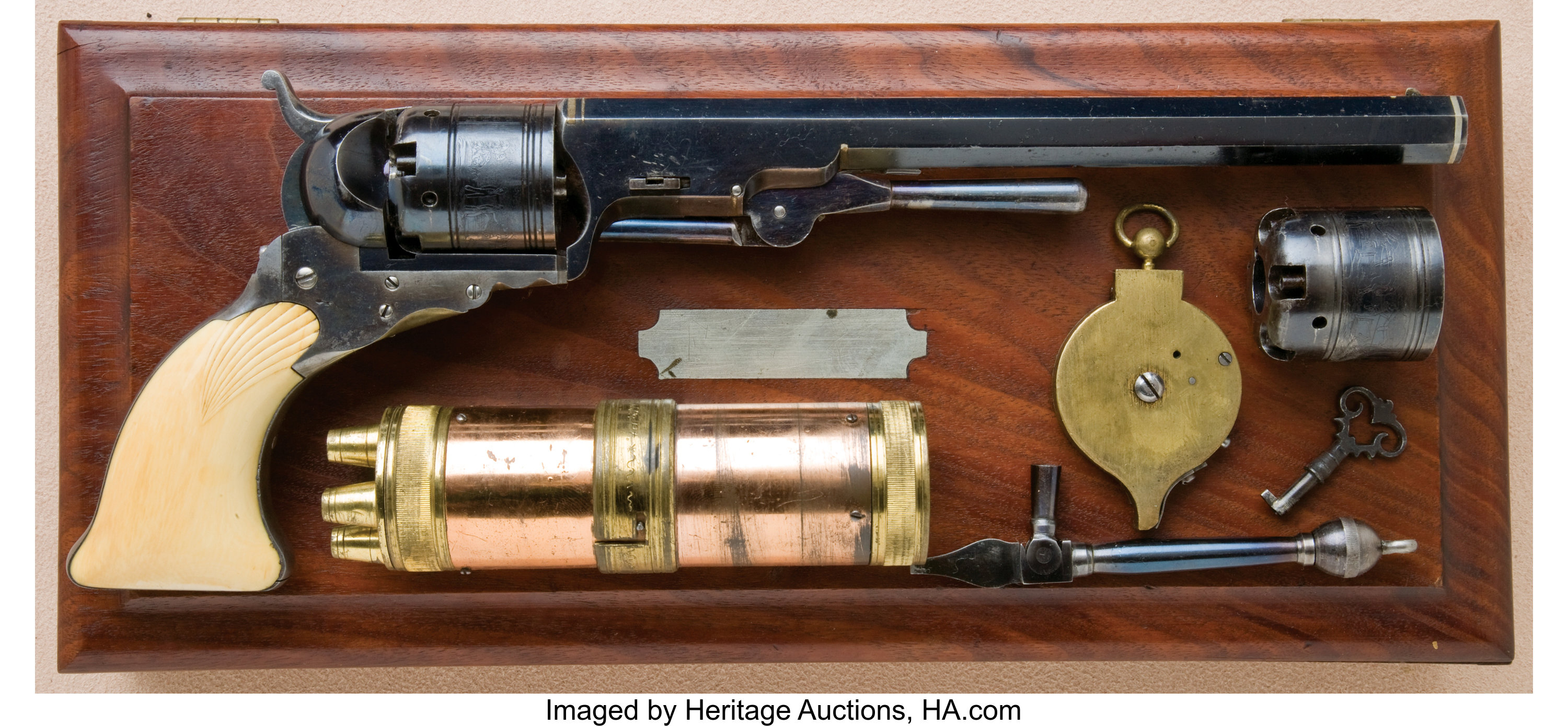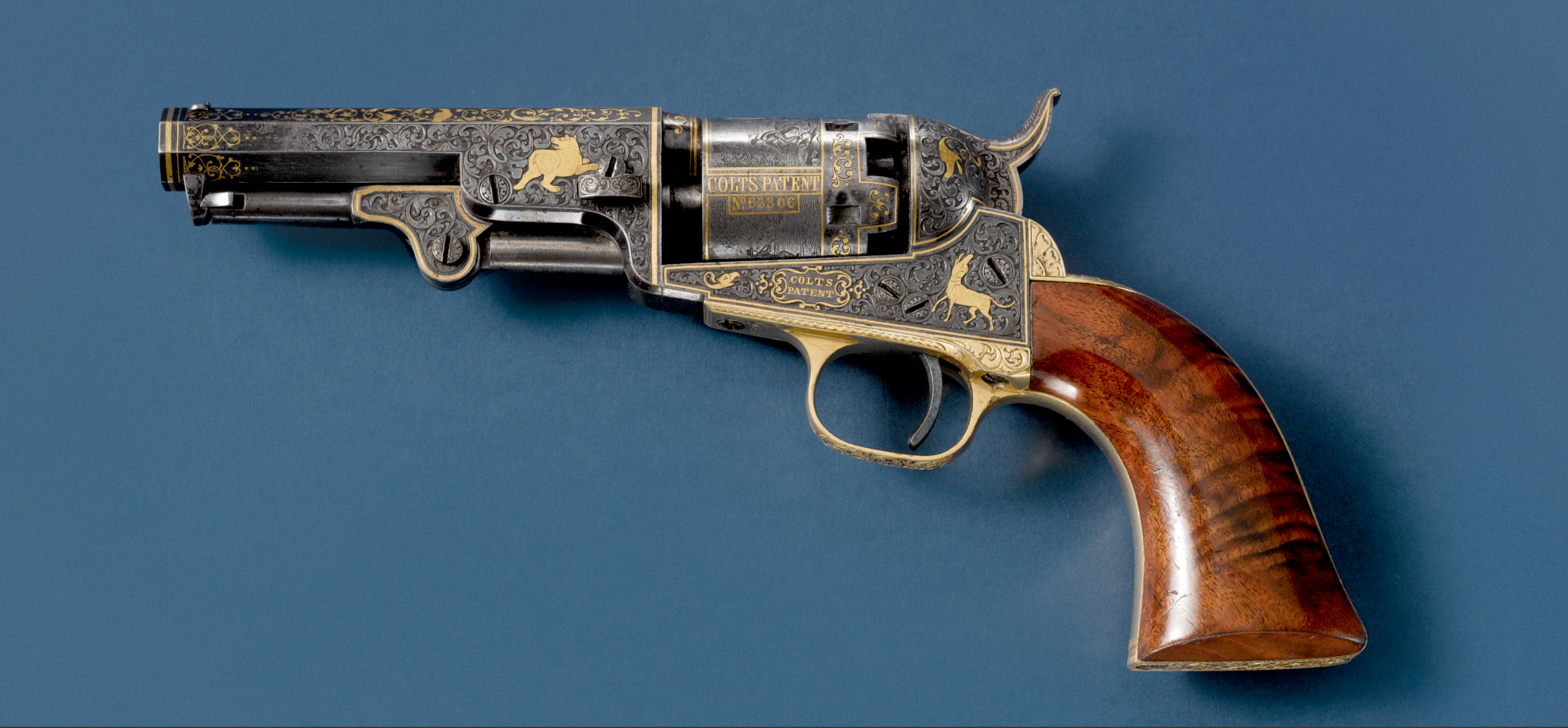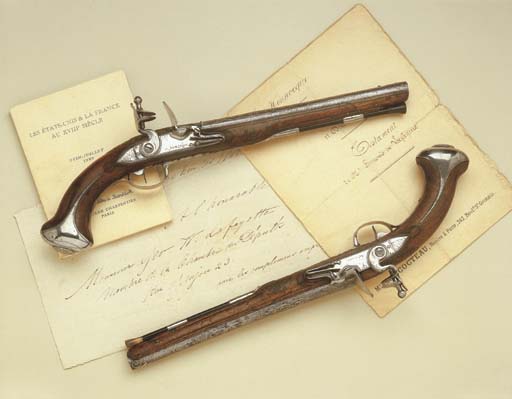
There are rare guns and historical guns, but then there are firearms so one-of-a-kind with such amazing stories behind them that they’re nearly priceless. Note the “nearly.” At auction, these ultra-rare firearms have fetched prices from $860,000 to almost $2 million.
These guns can command such prices because of their rarity and condition, like most valuable collectibles. But the most expensive carry eye-watering price tags because of their stories and who has owned them, which can be readily proven in auction talk because of the gun’s provenance. These are the six most expensive firearms ever sold.

Teddy Roosevelt’s Fox Shotgun Sale Price: $862,500 The 26th president of the United States was famously an avid hunter who took game all over America and on several continents. This was one of his shotguns, made by the Fox gun company for Roosevelt specifically. He took it with him on perhaps the most famous safari in history—the year-long Smithsonian-sponsored African Safari Roosevelt undertook the month after he left office.
In a letter to the Fox gun company, which had not yet been bought by Savage Arms, he said it was the most beautiful gun he’d ever seen. The gun itself is a 12-gauge Fox F Grade double-barrel side-by-side that was presented to Roosevelt while he was in the Oval Office by the president of the Fox Gun Company. It bears the inscription, “Made Expressly for Hon. Theodore Roosevelt.”
The Roosevelt family sold the double-barrel shotgun in 1974 and it was sold again in 2000. In 2010, the gun was auctioned for the hefty sum of $862,500, making it one of the most expensive guns ever sold.

Sam Wilson's 1847 Colt Walker Revolver Sale Price: $920,000 Wilson was issued this early Colt revolver in 1847 in Vera Cruz. What makes this revolver even more special is that it was specifically designed for the Texas Rangers. The Walker was one of the most powerful black powder pistols ever made. Colt only made a total of 1,100 Walker revolvers before the company moved on to the improved Colt Dragoon. Few Walkers survive today.
Not only was it a special version of an already very rare and historic revolver (about 170 are believed to still exist), this Walker was in near perfect condition and housed in the box it was issued with, complete with accessories. It’s extremely rare to find any black powder firearm from that era that’s completely free of corrosion, which is why this .44-caliber wheelgun fetched such a significant price at auction in 2008.
The Walker was massive, designed to be carried in holsters hung on a cavalryman’s saddle and fired from horseback. It had an overall length of 15.5 inches and weighed nearly 5 pounds. Its chambers held 50 to 60 grains of black powder and a conical 220-grain bullet, or a .44-calibre roundball.
Its namesake is Capt. Samuel Hamilton Walker, whose unit had been issued Samuel Colt’s first production revolver, the Colt Paterson. He saw the tremendous advantage the five-shot revolver provided and approached Colt with an order for revolvers with a list of improvements which Colt made, resulting in the Colt Walker.

Pristine Colt Paterson Revolver, with Accessories Sale Price: $977,500 The Colt Paterson is a historically important firearm. It was the first commercially viable revolving pistol and the first produced by Sam Colt in 1836. By modern standards and even the standards of the late 1800s, it was pretty primitive.
The Paterson, which gets its name from Paterson, New Jersey, the location of Colt’s first factory, was a delicate single-action revolver with a folding trigger. It only deployed from the frame when the hammer was cocked, and therefore, it had no trigger guard. It had a five-chamber cylinder and the gun had to be partially disassembled for loading.
The first Patersons did not have a loading lever, but later examples, like the Paterson in question, did. This pristine example of a Paterson with an ivory grip, of which about 2,200 were made, is chambered in .36 caliber with a 9-inch barrel. It bears a serial number of 515 and first entered the firearm collectors world in 1938 when it was listed for $1,650 by a shop in San Francisco.
The Paterson also included a number of original accessories that are so rare they’d be quite valuable on their own. The gun’s percussion cap dispenser could bring $35K at auction. It also included a brass charger, a kind of speedloader that dispenses balls and powder into all five cylinders at once, a spare cylinder, proprietary tools for the gun, and the case itself. Word is it was purchased by an anonymous Silicon Valley mogul for the almost $1 million in 2011.

The Golden Colt Model 1849 Pocket Revolver Sale Price: $1,142,500 This .31-caliber revolver is gold-inlaid with five animals depicted on the frame and barrel lugs—a bear, dog, leopard, pheasant, and fox. Each animal is surrounded by deep-relief engraved scrollwork with two additional gold-inlaid heads of mythical beasts and six animal head scroll finials throughout seven panels. The hammer is engraved with a gold-inlaid wolf’s head. The upper surface of the hammer has a hand-checkered spur and deep-relief engraving that comes to the head of a serpent. The barrel is entirely enraged.
Even the screws on this gun are orante. It’s a beautiful gun and in great condition, but why such a high price?
It’s part of a group of firearms Sam Colt made after his triumphant showing at London’s Great Exhibition of 1851. Before this gun came to collectors’ attention, there were only 21 gold-inlaid percussion Colt revolvers in existence. Most of these were likely made for exhibitions and as presentation pieces to important people.
While this particular revolver’s earliest provenance isn’t known, it was likely once presented to a European dignitary while Colt travelled through Europe and Russia.
The engraving and gold work is attributed to Gustave Young and the depth of the engraving is rare. Even the face of the muzzle is engraved. The pistol shows some wear but is in overall excellent condition.
Of the guns in this group that were made during Colt's lifetime and under his direction, only three were Model 1849 revolvers featuring the rare gold-inlaid decoration. In short, this gun is super unique and extremely rare.

Simon Bolivar’s Dueling Flintlock Pistols Sale Price: $1,760,000 For this kind of price, a firearm, or in this case, a pair of firearms, have to have a really important historical connection. These dueling pistols are linked directly to George Washington, the Marquis De Lafayette, and Simón Bolívar.
Lafayette came from France to join the American Revolution at just 19 and brought these guns with him. He was then adopted by Washington as a protégé. Later, in 1825, Lafayette presented the pistols to Simón Bolívar, a Venezuelan military leader and revolutionary who played a key role in liberating Colombia, Venezuela, Panama, Ecuador, and Peru. There are monuments to his accomplishments all over South America. Bolívar was also a gun guy who collected firearms, and these dueling pistols were some of his finest.
They made their way to Christie’s auction block in 2004, when they became the second most expensive firearms ever sold.

George Washington’s Saddle Pistols Sale Price: $1,986,000 The man himself, George Washington, carried these guns in holsters hanging from the pommel of his saddle at Valley Forge, Monmouth, and Yorktown, and then later during the Whiskey Rebellion while he was the first president of the United States.
Of course they’re going to be very near priceless, or, you know, $2 million (which is what they sold for at Christie’s in 2002). As if they weren’t important enough, they were labelled, “The Lafayette/Washington Pistols” because they were gifted to Washington by the Marquis de Lafayette in 1778.
The historical guns were bought by a foundation in Pennsylvania at auction. The foundation then donated them in 2004 to the Fort Ligonier Museum in Ligonier, Pennsylvania, to be displayed as part of their Washington Collection.
The twin flintlock pistols were made by French gunsmith Jacob Walster in Saarbruck, France, (which is now in Germany) between 1775 and 1777. They are nearly identical, stocked in fine stained European walnut and subtly carved with gold and silver inlays. They measure 17.5 inches long overall and have smoothbore, .57-caliber barrels (estimated) that are 11.5 inches long, heavily engraved, and feature silver and gold accents.
Interestingly, the tapered, wrought-iron barrels are octagonal at the breech, but become round at the muzzle. This was likely done to reduce weight and improve balance.
When the guns were auctioned, although no one would dare to test them, the flintlocks appeared to still be functional.
After Washington’s death in 1799, the guns went to his nephew, William Augustine Washington, and then to his son-in-law, William Robinson. In 1824, Robinson presented them to none other than Andrew Jackson via Virginia Congressman Charles Fenton Mercer.
After Jackson was elected president in 1829, Lafayette paid him a visit. Jackson brought out the guns to see if the story he’d been told about the guns’ origin was true. Lafayette confirmed they were, indeed, the guns he had given to Washington many years earlier.
Jackson kept the guns until his death and left them to Lafayette’s son, George Washington Lafayette, who lived in France. The pistols stayed in the family for many years. They are the most expensive guns ever sold.






Conversation